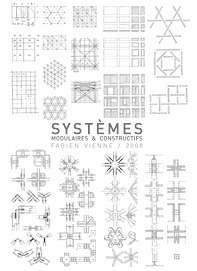MODULAR & CONSTRUCTION SYSTEMS
![]()
Though the systems differ by case, the underlying thought is the same: to make of the system the simultaneous answer to the plastic requirements of the architect, the economic constraints of the owner, the technical capabilities of the contractor, and the users' demands for comfort. For Vienne, the system is first and foremost a guarantee of a coherent result. A system's repetition (in contrast to case-specific solutions), shifts far upstream all the thinking on the architectural object, including the requirements for its realization. Tolerating no inaccuracy, it also requires comprehensive thinking about the "accident" or idiosyncrasy (limits, articulations, changes of direction, topography). The choice of a systems approach brings not only an architectural result of higher quality – and generally at lower cost – owing to a rationalized construction process most often prepared offsite, but also greater ease of execution.
The full set of esthetic and practical aims harks back to Vienne's vision (see biography) of architecture as a discipline rooted in geometry as the central principle that can express and embody a project's essence.


The retrospective nature of the attached document – a compendium of more than a half-century of experiments – could create the impression that the architect had at the beginning of his career a "plan" of the systems he was to create. Of course, such was not the case, and if this document connects the dots of a mind in motion and, to an extent, freeze-frames a body of thought which might have taken form differently, it will also be followed – in the spirit of a "work in progress" – by the further developments of a work in perpetual refinement.
The selected examples are far from exhaustive and sometimes blur the lines between modular and construction systems.
Xavier Dousson - July 2008
architect DPLG, researcher, teacher